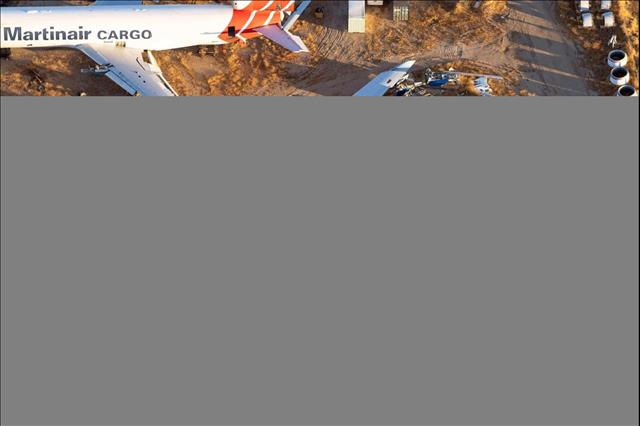
Scrapped former United Airlines B747 surfaced at Mojave Desert
(MENAFN- Bangladesh Monitor) Dhaka: As a result of the pandemic, many Boeing 747s have been retired ahead of their time. However, the major US carriers all retired their last 747s years ago. While some would have found a new home with other airlines, many would have made a one-way trip to be scrapped with vital parts being salvaged.
While the Queen of the Skies has been flying around the world for over half a century, it seems as though her reign is now coming to an end. Over the past year, we have seen many 747s making a final one-way flight. Some made the trip years ahead of schedule.
The Mojave Desert has a mixed reputation when it comes to the fate of planes. Due to its arid climate, it is the perfect location to store unneeded aircraft. While some, like Qantas' Airbus A380 fleet, will hopefully return to the skies, for many, the trip to Mojave is one way. This was the case with a Lufthansa Boeing 747-400 earlier this week.
Mojave Air And Space Port is home to many Boeing 747s that have taken their final flight. One example is N198UA, a former United Airlines 747-400. The plane that you can see in this article's top photo was delivered to United Airlines in August 1997.
Sadly, the aircraft only remained in service for 11 and a half years, being stored at Victorville in March 2009, according to data from PlaneSpotters.net. The source then shows that the aircraft was relocated to Mojave Air And Space Port in March 2012 while being transferred to Scaled Composites. The aircraft was broken up in January 2015 at the age of 17.4 years.
It is not just United Airlines' Boeing 747s that have been scrapped in Mojave. Indeed, among others, the site has been responsible for storing and scrapping 747s from KLM, Thai Airways, Air France, Lufthansa, and Qantas.
While the Boeing 747 was revolutionary when it was released, it has fallen out of favor as aviation technology has evolved. Indeed, only three airlines took delivery of the Boeing 747-8 in a passenger configuration.
Given the current emphasis on sustainability and reducing emissions, tied with the increase of engine reliability, it is no longer needed to operate so many engines. Twin jets use less fuel and thus create fewer emissions than their four-engined friends. Indeed, according to Lufthansa, the A350-900 uses 12% less fuel than the Boeing 747-8.
In addition, with the increased reliability of aircraft engines, twinjet planes can now fly further from airports than ever before. Indeed, the Airbus A350-900 was granted an ETOPS time of 370 minutes by EASA before certification. According to Airbus, this made it the first aircraft with an ETOPS time above 180 minutes when entering into service.
Legal Disclaimer:
MENAFN provides the
information “as is” without warranty of any kind. We do not accept
any responsibility or liability for the accuracy, content, images,
videos, licenses, completeness, legality, or reliability of the information
contained in this article. If you have any complaints or copyright
issues related to this article, kindly contact the provider above.
Most popular stories
Market Research

- Versus Trade Launches Master IB Program: Multi-Tier Commission Structure
- Mutuum Finance (MUTM) New Crypto Coin Eyes Next Price Increase As Phase 6 Reaches 50% Sold
- Flexm Recognized As“Highly Commended” In The Regtech Category At The Asia Fintech Awards Singapore 2025
- Tappalpha's Flagship ETF, TSPY, Surpasses $100 Million In AUM
- Stocktwits Launches Stocktoberfest With Graniteshares As Title Partner
- Pendle Grows An Additional $318 Million TVL Just 4 Days After Plasma Launch



















Comments
No comment